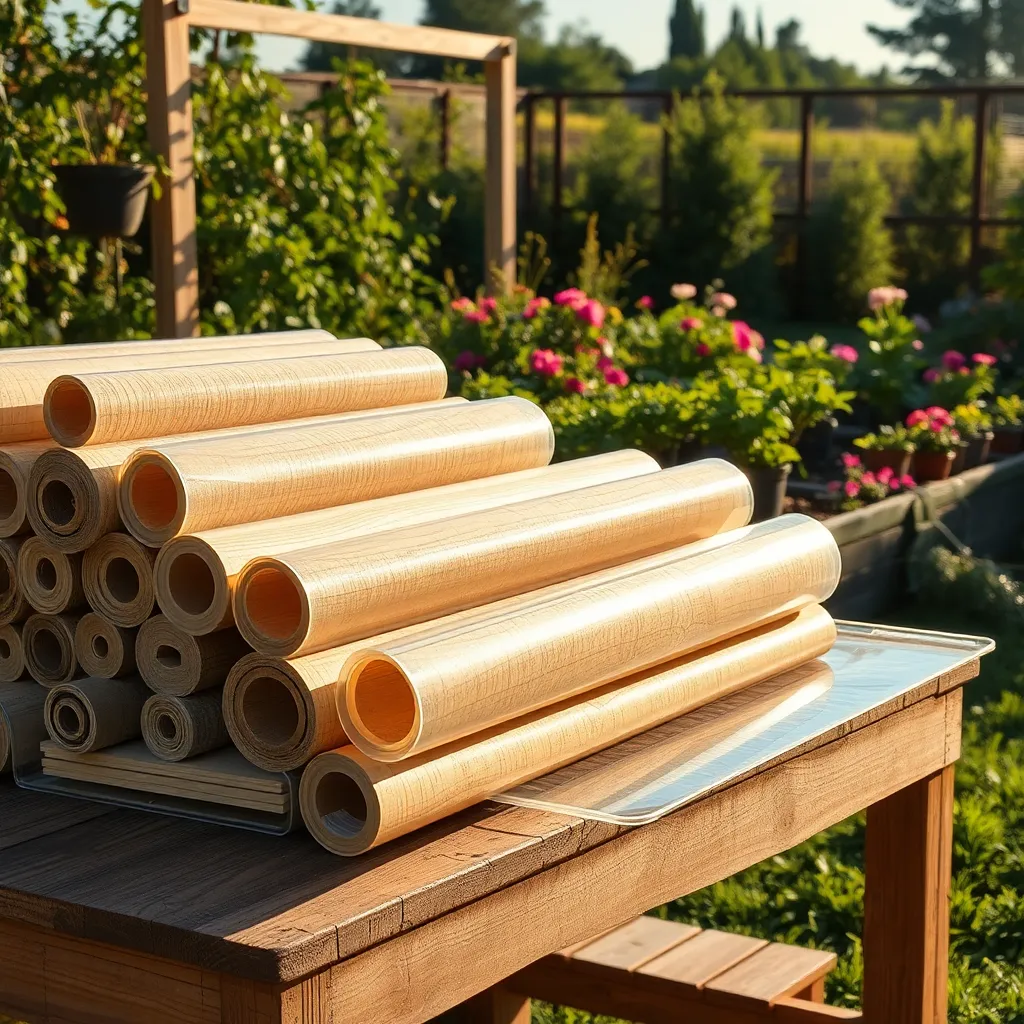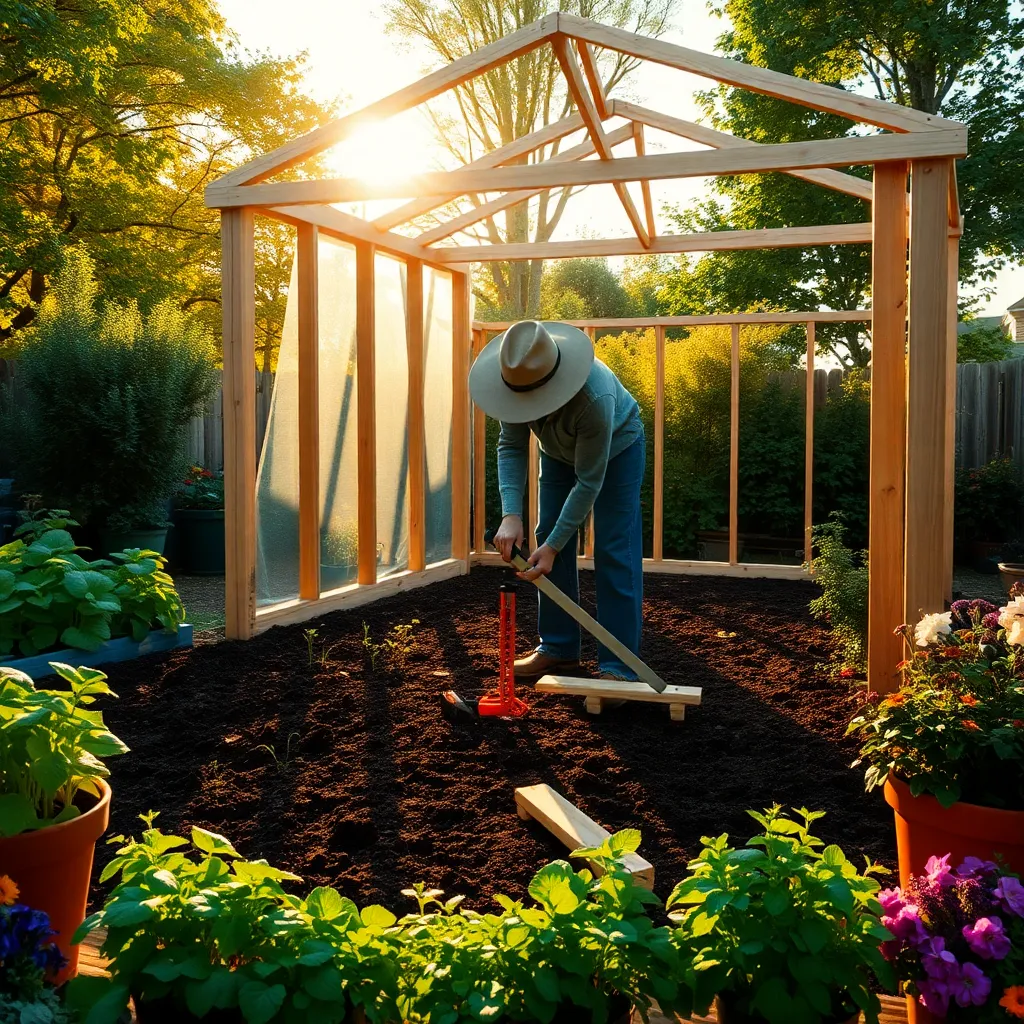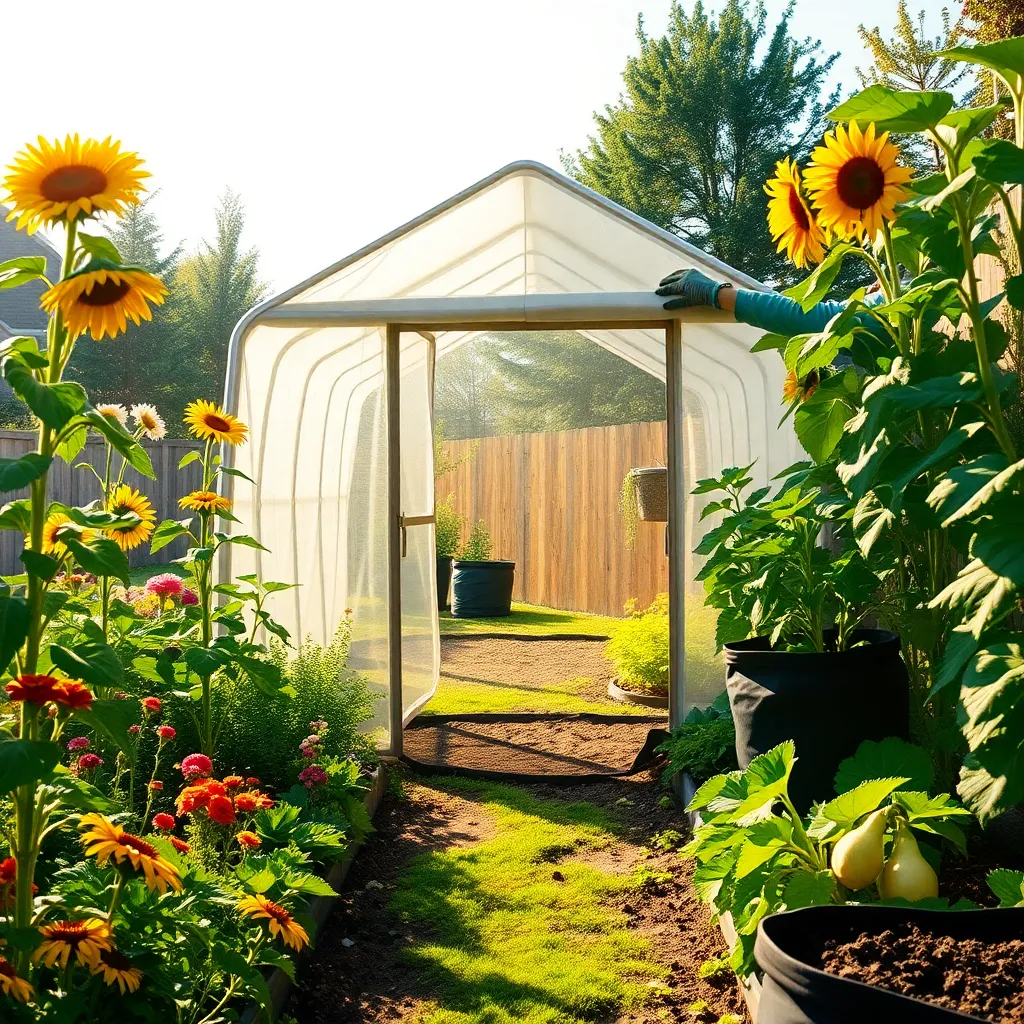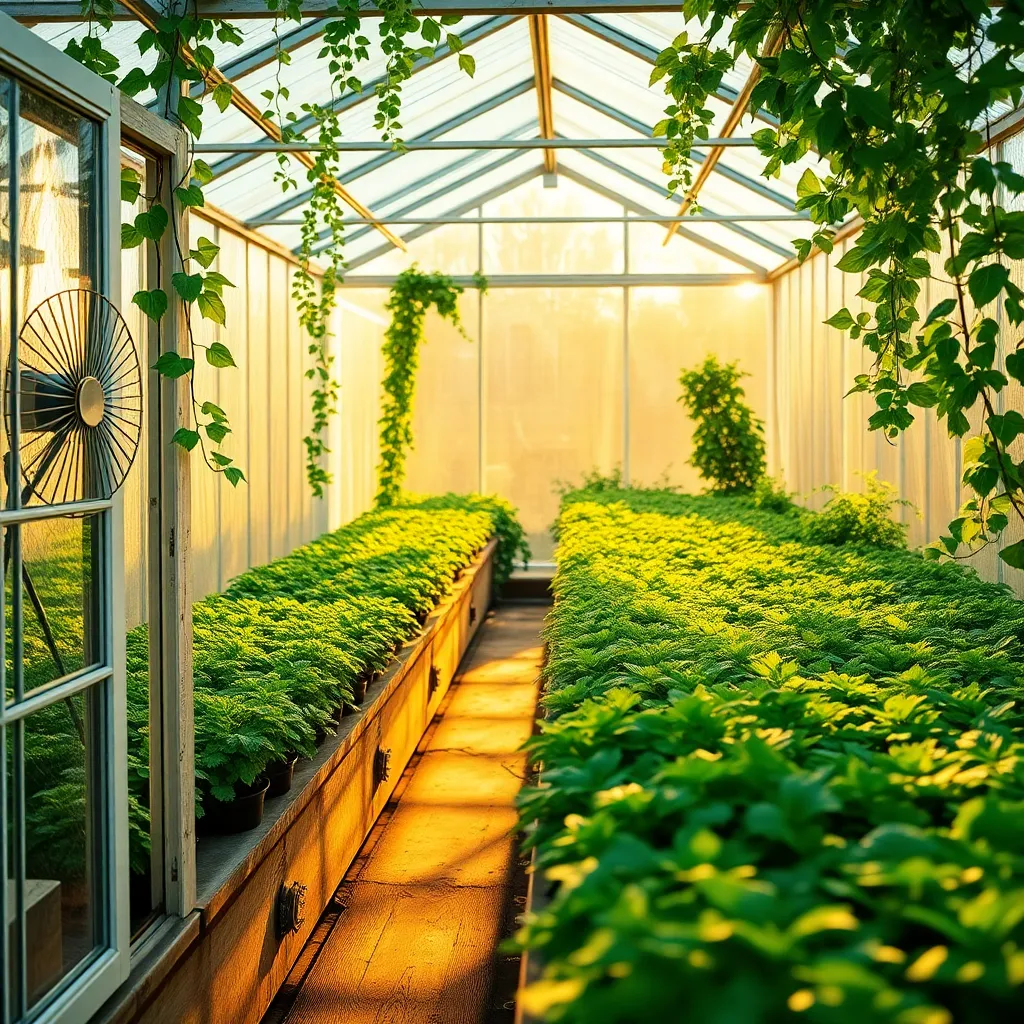Imagine stepping into your backyard and being greeted by a lush oasis of greenery, thriving no matter the season. Creating a greenhouse in your backyard can transform this dream into a reality, offering both beginner and experienced gardeners the opportunity to extend their growing season and cultivate a wider range of plants. It’s more than just a structure; a greenhouse becomes a sanctuary where you can nurture life and witness the magic of nature unfold right at your fingertips.
For those just starting their gardening journey, the idea of building a greenhouse might seem daunting. However, this project is entirely achievable with the right guidance and can open up a world of possibilities for your gardening endeavors. Seasoned gardeners, too, will find that a backyard greenhouse introduces new dimensions to their planting strategies, allowing for experimentation with exotic species and providing a controlled environment to refine their green thumb skills.
In this article, we will guide you through the step-by-step process of creating your own backyard greenhouse, from selecting the ideal location to choosing the best materials and design. You’ll learn about the various types of greenhouses, their specific benefits, and how to customize them to fit your unique gardening goals. Whether you’re aiming to grow your own vegetables year-round or create a tropical paradise, this guide will equip you with the knowledge and confidence to make your greenhouse dreams come true.
Select Optimal Greenhouse Location

Choosing the right location for your greenhouse is critical for success. Begin by identifying a spot that receives ample sunlight, ideally at least six hours of direct sunlight per day.
Orientation is key—positioning the greenhouse with its ridge running east to west can maximize sunlight exposure throughout the day. This positioning helps maintain consistent temperatures and light levels, crucial for optimal plant growth.
Consider the prevailing wind direction in your area. Shelter your greenhouse from strong winds by placing it near a natural windbreak like a hedge or by installing a man-made barrier.
In addition to sunlight and wind, ensure your chosen location has good drainage. Avoid low-lying areas where water might accumulate, and consider raising the greenhouse slightly with a gravel or concrete base.
Access to utilities such as water and electricity can make greenhouse management more convenient. Plan to install a rainwater collection system for sustainable watering and ensure nearby access to electricity if you plan to use heating or lighting systems.
Experienced gardeners might opt for automated systems to control climate conditions. These systems can maintain optimal humidity and temperature levels, providing a more stable environment for delicate plants.
Gather Necessary Construction Materials

Before you start building your greenhouse, gather all the necessary construction materials to ensure a smooth process. You will need **durable materials** like treated wood or galvanized steel for the frame, which provide stability and longevity.
Consider opting for **polycarbonate panels** or polyethylene film as your covering material, as they offer excellent insulation and light transmission. For those with a bigger budget, **glass panels** can be used for a more permanent and aesthetically pleasing structure.
It’s essential to have a **solid foundation** to support your greenhouse, which can be made from concrete slabs, gravel, or treated timber. A **level base** not only stabilizes your structure but also aids in proper drainage, preventing water accumulation inside your greenhouse.
Ensure you have a **ventilation system** in place, which might include manual or automatic vents and fans to maintain optimal growing conditions. For gardeners in colder climates, consider adding a **heating system** to extend your growing season and protect your plants during frost spells.
Build a Sturdy Frame Structure

Building a sturdy frame structure is essential for ensuring the longevity of your greenhouse. Begin by selecting the right materials, such as treated wood or galvanized steel, which are both durable and resistant to the elements.
Consider the size and shape of your greenhouse to determine the appropriate frame design. For beginners, a simple rectangular shape is often the most manageable and provides ample space for various plants.
Ensure your foundation is level and secure before erecting the frame. This can be achieved by using ground stakes or a concrete base, which will help stabilize the structure against wind and weather conditions.
Assemble your frame by following the plans closely, ensuring all joints are tightly secured. Use high-quality screws or bolts to connect parts, as these provide better stability than nails and can be tightened as needed over time.
For added strength, consider reinforcing the corners with metal brackets. This technique is particularly useful in areas prone to high winds or heavy snowfall, ensuring your greenhouse remains intact.
Once the frame is complete, regularly inspect it for any signs of wear or damage. Routine maintenance, such as tightening loose bolts and checking for rust or rot, will keep your greenhouse structure robust and reliable for years to come.
Install Durable Greenhouse Covering

Once you have built a sturdy frame structure, the next step is to install a durable greenhouse covering. Choosing the right covering material is crucial because it affects light transmission, insulation, and the overall durability of your greenhouse.
Consider using polyethylene film as it is a cost-effective option that provides good light penetration and insulation. For more durability and longevity, polycarbonate panels offer excellent insulation and can withstand harsh weather conditions.
To attach the covering, ensure it is stretched tightly over the frame to prevent sagging and water accumulation. Use proper fasteners like spring wire or batten tape to secure the material, which can help maintain the structure’s integrity even during strong winds.
Regular maintenance of the covering is essential for a long-lasting greenhouse. Clean the surface periodically with a mild detergent and water to remove dirt and algae, ensuring maximum light penetration for your plants.
Set Up Efficient Ventilation System

Ensuring proper ventilation in your greenhouse is essential for maintaining a healthy growing environment. By setting up an efficient ventilation system, you can regulate temperature and humidity, which are critical for plant health.
Start by installing roof vents and side vents to allow for natural airflow. These vents should be positioned strategically to create a cross-ventilation effect, which helps in expelling hot air and bringing in cooler air.
For those looking to enhance their setup, consider adding exhaust fans to actively remove warm air when the temperature rises. These fans should be placed opposite the intake vents to maximize airflow efficiency.
In addition to mechanical aids, using shade cloths can help manage heat during the hottest parts of the day. This reduces the reliance on fans and vents by naturally lowering the greenhouse temperature.
Monitoring systems can be particularly beneficial for advanced gardeners wanting precise control over their greenhouse environment. These systems can automate fan operation based on temperature and humidity readings, ensuring optimal conditions are maintained effortlessly.
Conclusion: Growing Success with These Plants
As you embark on the rewarding journey of building a backyard greenhouse, remember that nurturing your relationship with your partner can be just as fulfilling. We’ve explored five key concepts: communication, teamwork, shared vision, patience, and adaptability. These are the pillars not only for your greenhouse project but also for strengthening your relationship. Effective communication helps in aligning goals and resolving conflicts, while teamwork ensures you both contribute meaningfully. Sharing a vision fortifies your bond, giving you a common purpose to strive toward. Patience allows you to appreciate the growth process, and adaptability keeps your relationship resilient in the face of challenges.
As an actionable next step, sit down with your partner today and discuss one small project you can start together, whether it’s planning your greenhouse or any other shared interest. This will reinforce your teamwork and shared vision.
Remember, the path to a thriving relationship is a continuous journey. Bookmark this article to revisit these valuable insights whenever you need guidance. By nurturing these relationship skills, you set the foundation for a flourishing partnership that grows as steadily and beautifully as your backyard greenhouse. Here’s to a future filled with mutual growth and success!
